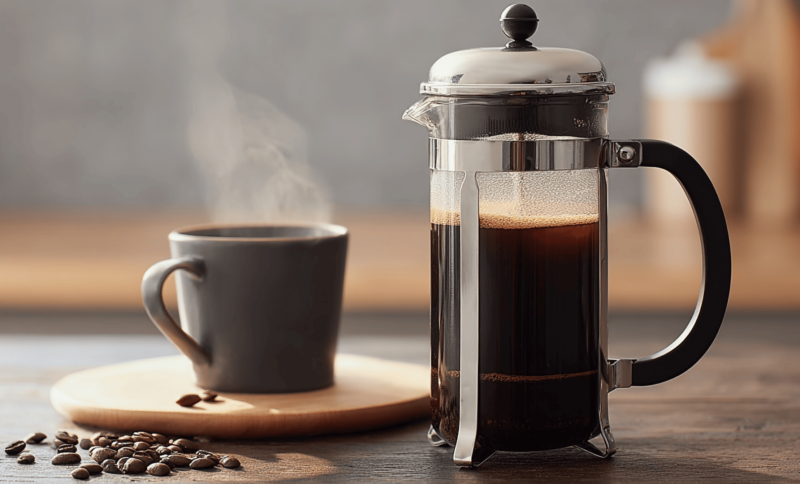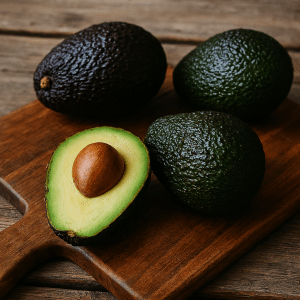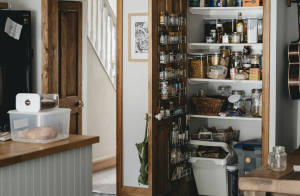There’s something undeniably special about the French press. While modern coffee makers boast digital displays and automated settings, this humble glass carafe remains a captivating choice for coffee lovers worldwide.
Its charm lies in simplicity, bold, full-bodied flavor with no wires, filters, or fuss. Every plunge feels personal, turning brewing into a ritual rather than a routine.
From its European origins to its modern revival, the French press has stood as a symbol of mindful living and refined taste.
It’s where coffee culture, sustainability, and timeless design blend seamlessly, proof that sometimes, the simplest methods create the most extraordinary moments in every cup.
The Surprising History of the French Press
The French press has a history as rich as its brew. Though its name suggests otherwise, this iconic coffee maker is a product of both French creativity and Italian refinement.
The first plunger-style coffee patent appeared in France in 1852, credited to Mayer and Delforge.
Decades later, in 1929, Italian designer Attilio Calimani perfected the concept, followed by Faliero Bondanini in the 1950s, whose La Cafetière brand, later linked with Bodum, made it a European staple.
The term French press endured, honoring its origins even as Italy refined the design.
Today, it symbolizes more than a brewing tool; it’s a celebration of slow, mindful coffee-making in a fast-paced world.
The Science Behind Simplicity
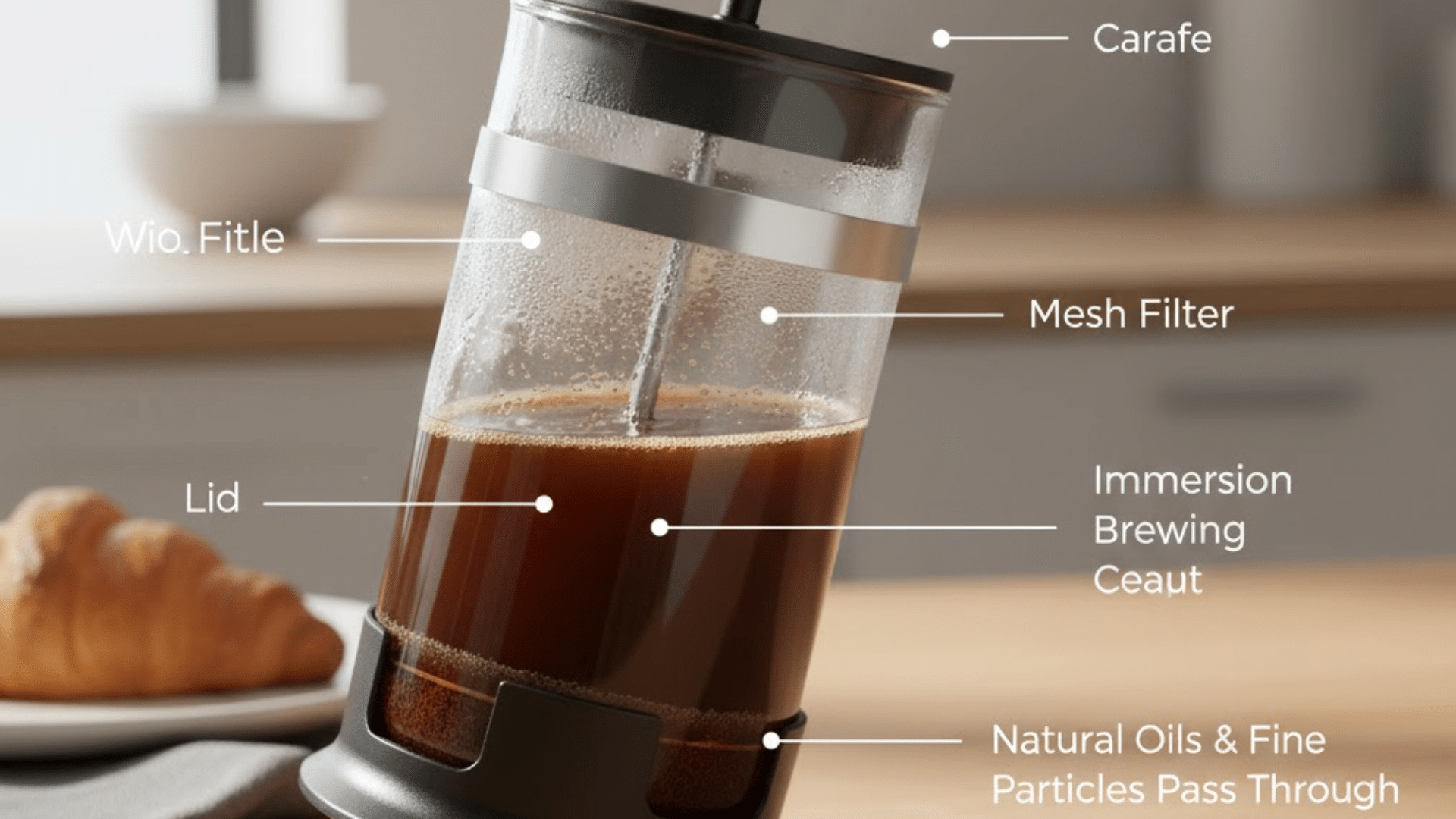
The French press uses immersion brewing, meaning coffee grounds steep directly in hot water rather than having water pass through them quickly.
Here’s what makes it work:
The carafe holds both water and grounds during the brewing process. The plunger features a mesh filter that separates grounds from liquid when pressed down. The lid helps retain heat during the steeping process.
Unlike drip coffee makers that use paper filters, the metal mesh allows natural oils and fine particles through.
This creates that signature full-bodied texture and depth of flavor French press coffee is known for.
What You’ll Need
|
Step-by-Step French Press Coffee Recipe
Master these steps and you’ll brew café-quality coffee at home every time.
Step 1: Preheat Your Carafe
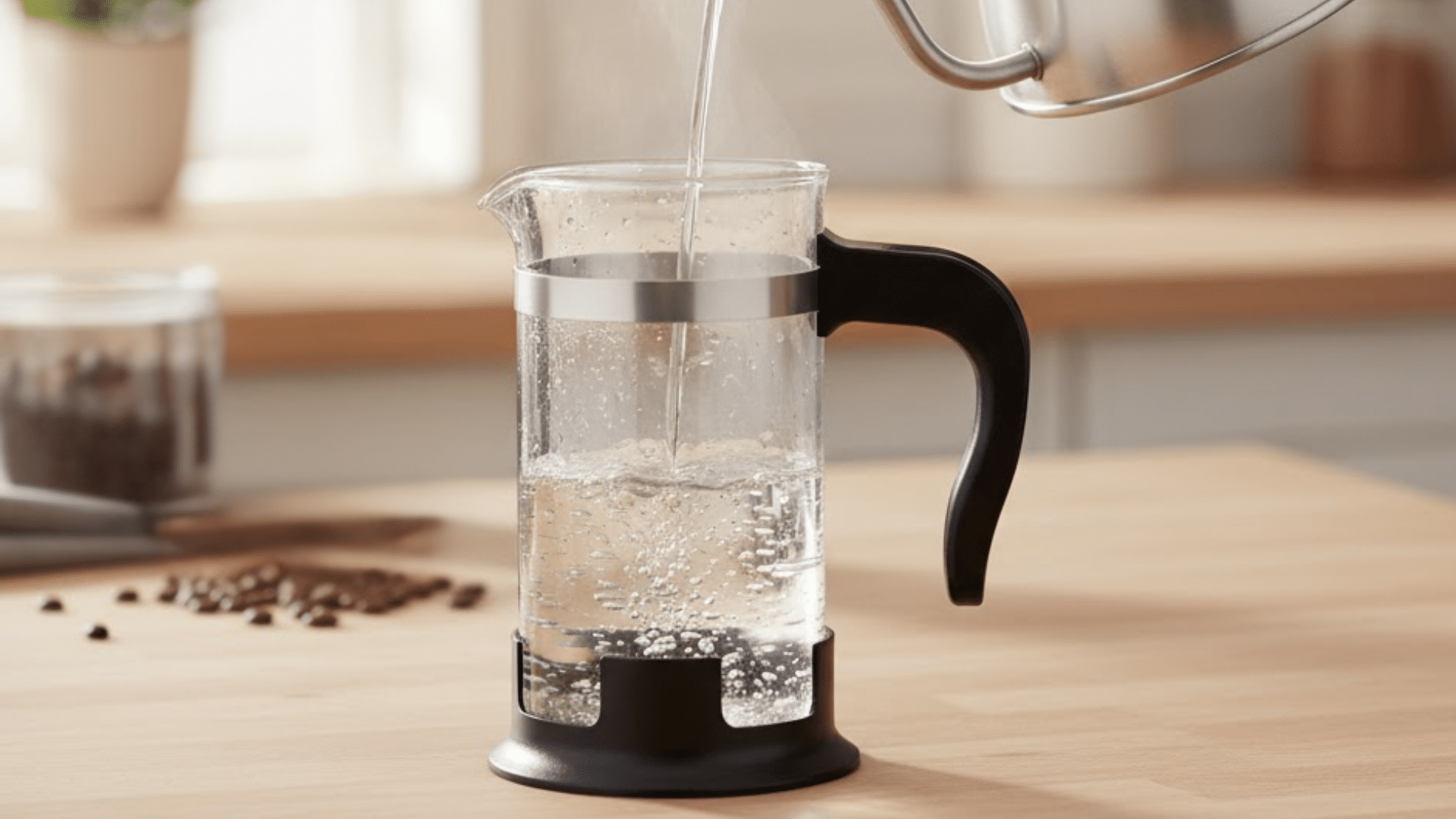
Pour hot water into your French press and let it sit for 30 seconds. This stabilizes the temperature for optimal brewing.
Discard the water before adding coffee to maintain consistent heat and ensure rich, even extraction every time.
Step 2: Grind Your Beans to Medium-Coarse
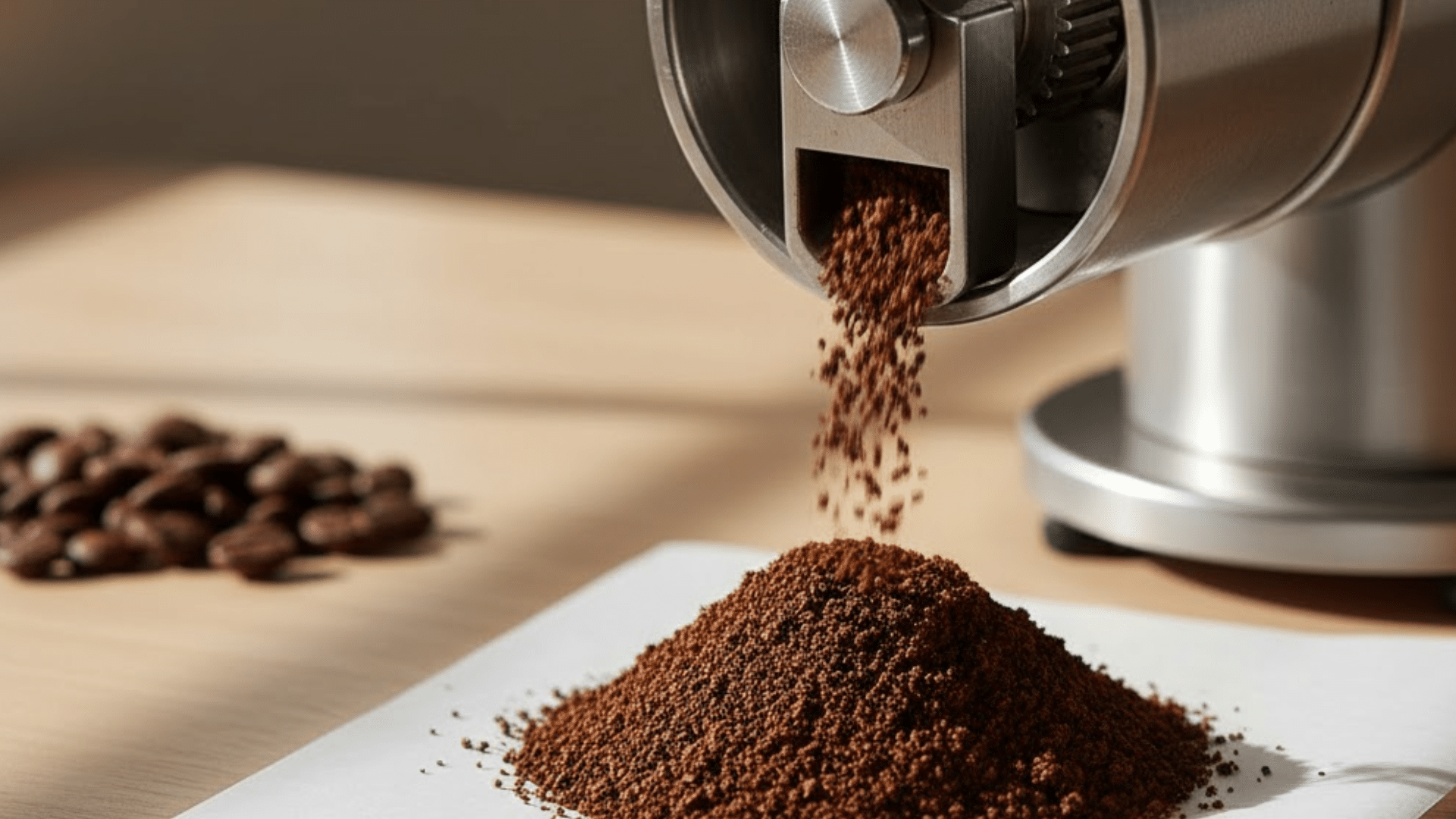
Grind fresh coffee beans to a texture like sea salt. Too fine causes bitterness; too coarse makes it weak.
A burr grinder ensures consistency and a balanced flavor, providing a cleaner, smoother cup with minimal sediment and a perfect aroma.
Step 3: Add Coffee Using the Right Ratio
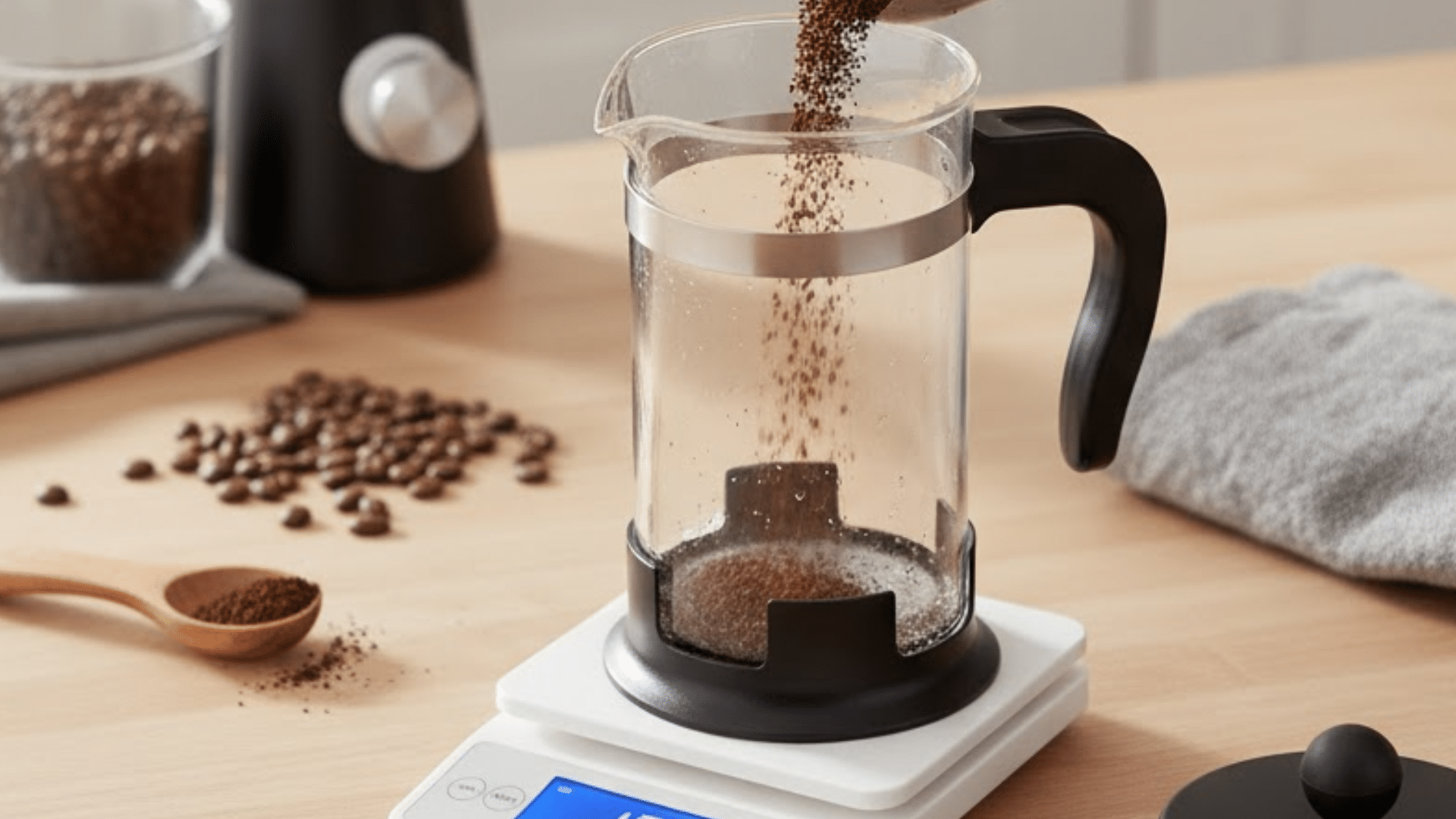
Use a 1:15 coffee-to-water ratio for balance, one gram of coffee per 15 grams of water. For one cup, that’s roughly two tablespoons.
Adjust ratios slightly to suit personal preference for a stronger or lighter coffee experience.
Step 4: Pour Water and Bloom
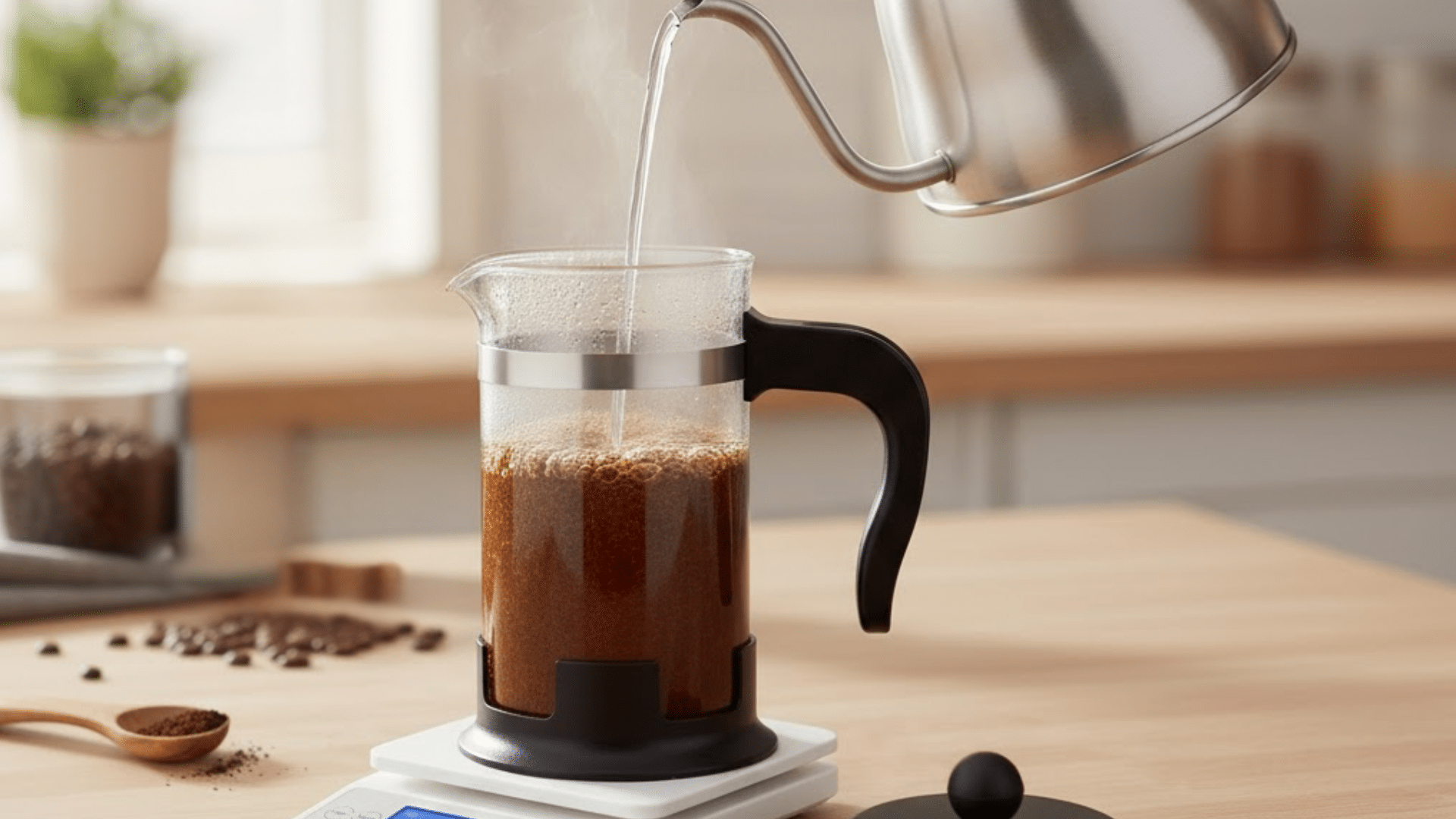
Pour just enough hot water to saturate all the grounds, about twice the weight of the coffee. Let it bloom for 30 seconds.
This releases carbon dioxide and enhances extraction, creating a more vibrant, aromatic, and flavorful French press brew.
Step 5: Stir and Fill with Water
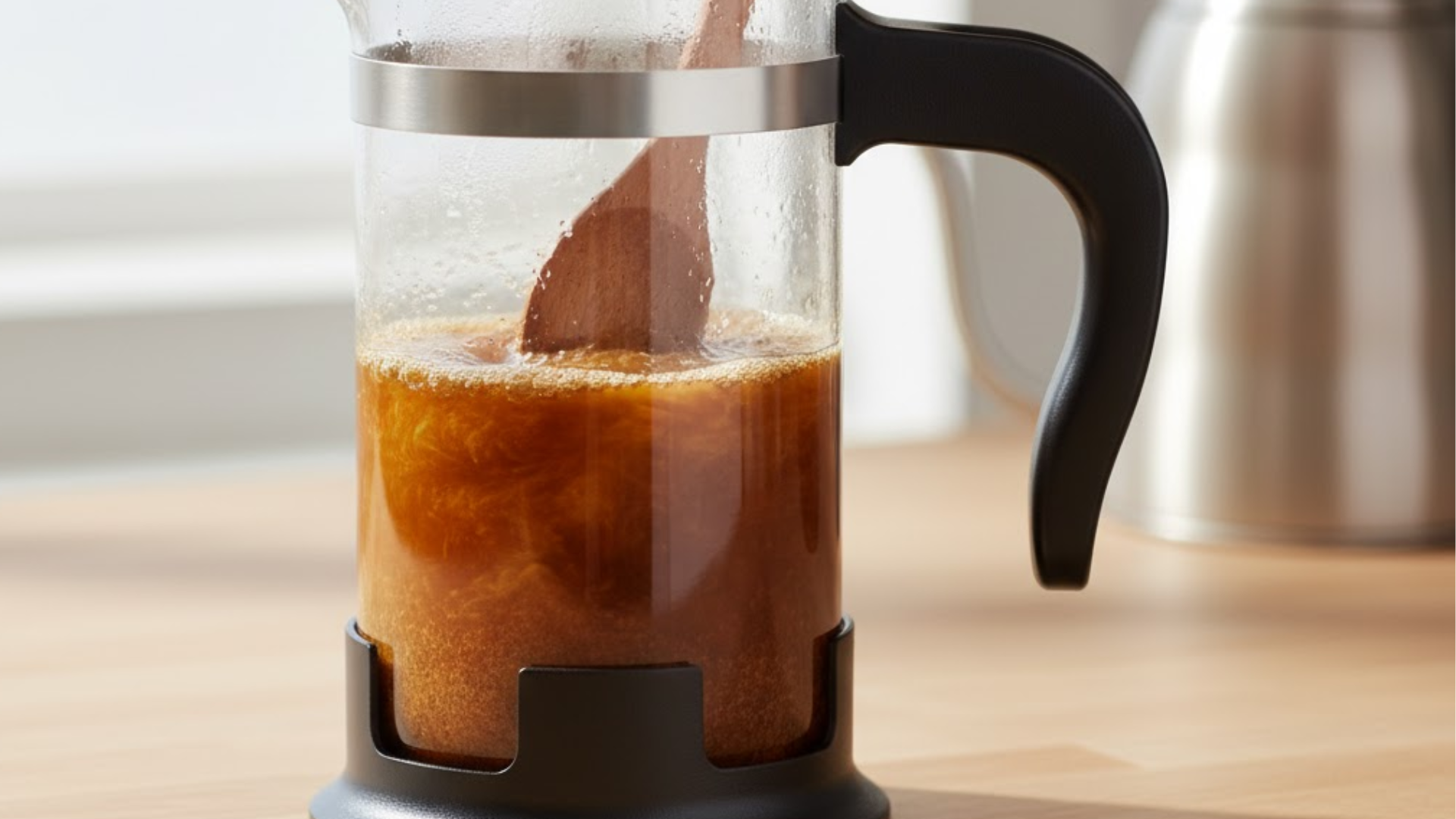
After blooming, gently stir the mixture with a wooden spoon to break the crust and ensure even saturation.
Then, pour in the remaining hot water to fill the press, preparing it for a perfectly balanced steep.
Step 6: Steep for 4 Minutes and Plunge Slowly
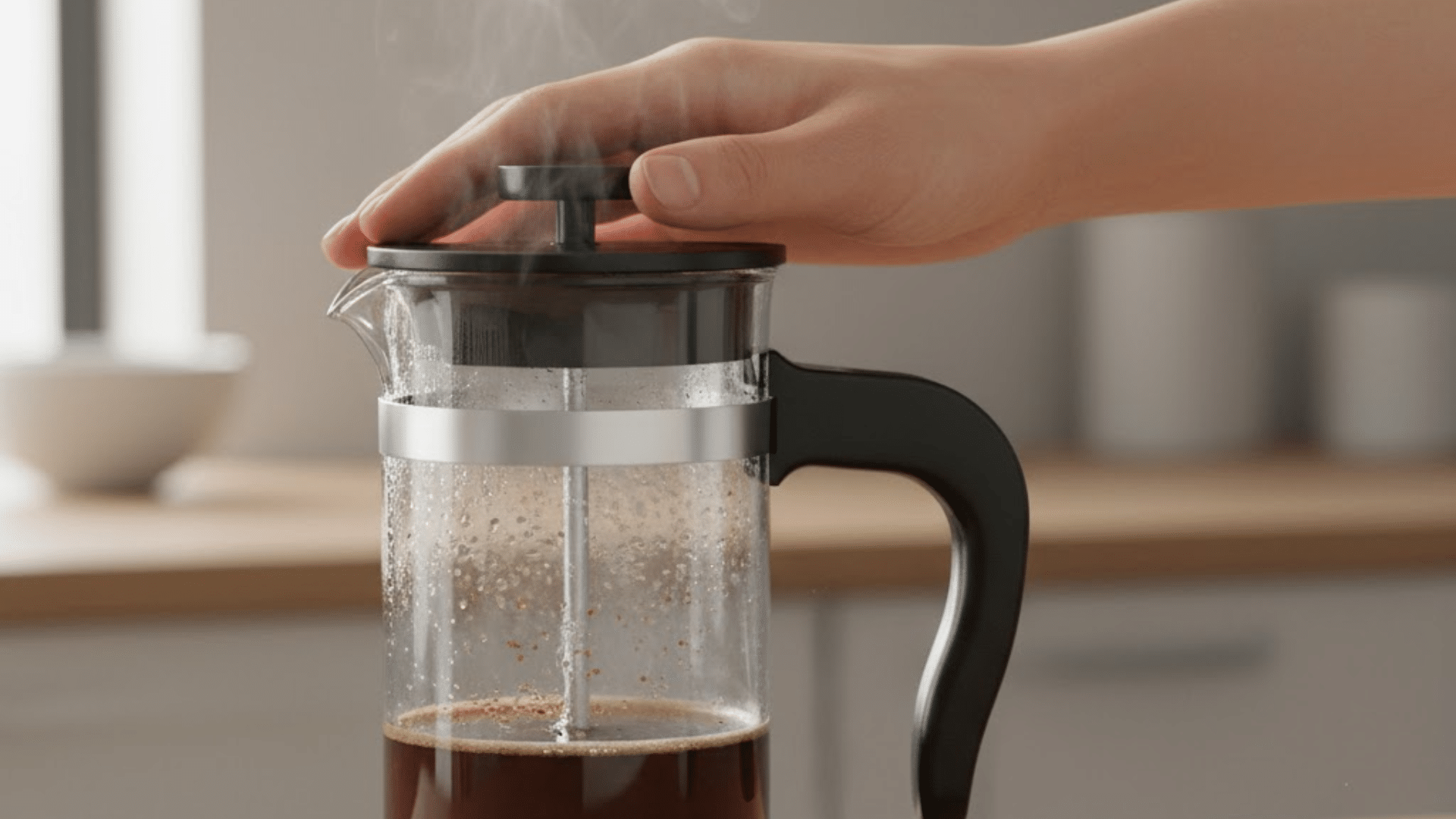
Cover with the lid and steep for exactly 4 minutes. Then plunge slowly, applying steady pressure over 20–30 seconds.
This ensures clarity, balanced extraction, and prevents fine particles from slipping through, resulting in a smooth and rich coffee.
Step 7: Serve Immediately
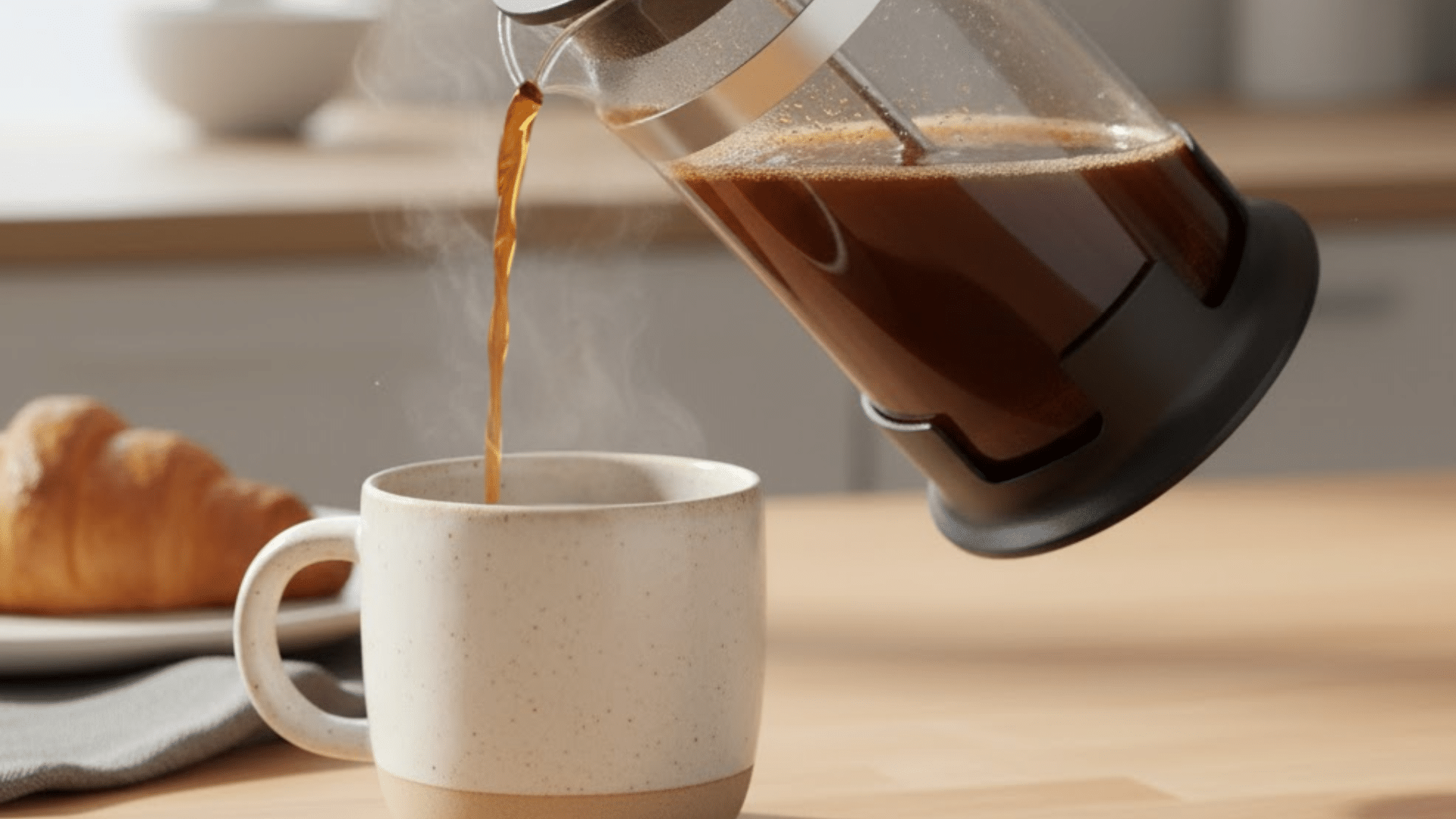
Pour the freshly brewed coffee into your mug or a separate carafe right away. Leaving it in the press causes over-extraction and bitterness.
Enjoy your cup fresh for its full-bodied aroma and perfectly balanced flavor.
Brewing Tips for the Perfect Cup
Follow these guidelines to improve your results:
- Use freshly roasted beans purchased within the last month
- Keep water temperature consistent; boiling water (212°F) can scorch grounds
- Don’t over-steep, bitterness increases dramatically after 5 minutes
- Always decant immediately after plunging to stop the extraction
- Clean the mesh filter regularly to prevent oil buildup that affects taste
Perfect each detail, and your French press will reward you with rich, balanced, café-quality coffee.
Pros and Cons of French Press Coffee
Understanding both sides helps you decide if this brewing method fits your lifestyle.
| Advantages | Drawbacks |
|---|---|
| Rich, full-bodied flavor profile | Some sediment settles in your cup |
| Complete control over brewing variables | Cleanup requires more effort than pod machines |
| Eco-friendly with no disposable filters | Risk of over-extraction if timing is off |
| Affordable and built to last for years | Contains higher levels of cafestol (unfiltered oils) |
The sediment issue is minor once you adjust your grind size properly.
As for cafestol, it can raise cholesterol levels in some individuals, though this is only a concern with heavy, daily consumption.
Delicious Recipes Using French Press Coffee
French press coffee isn’t just for mornings. Its deep, rich flavor makes it the perfect base for refreshing, creamy, or indulgent coffee creations.
1. French Press Iced Coffee
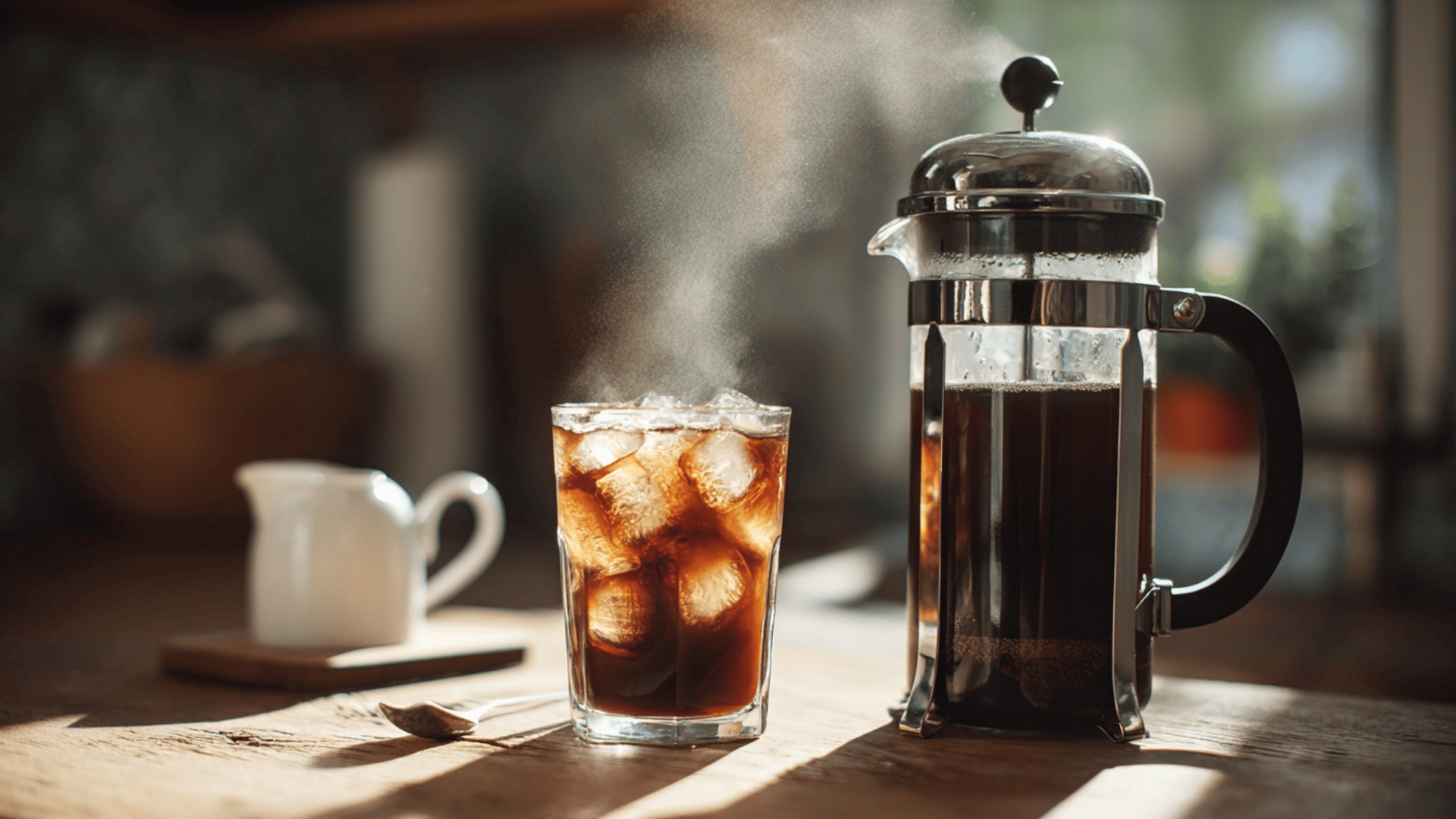
Brew your French press coffee normally and let it cool.
Pour over ice, add milk or sweetener, and savor a refreshing, smooth drink that remains bold without dilution, perfect for warm days or when you crave a chilled caffeine boost.
2. Café au Lait
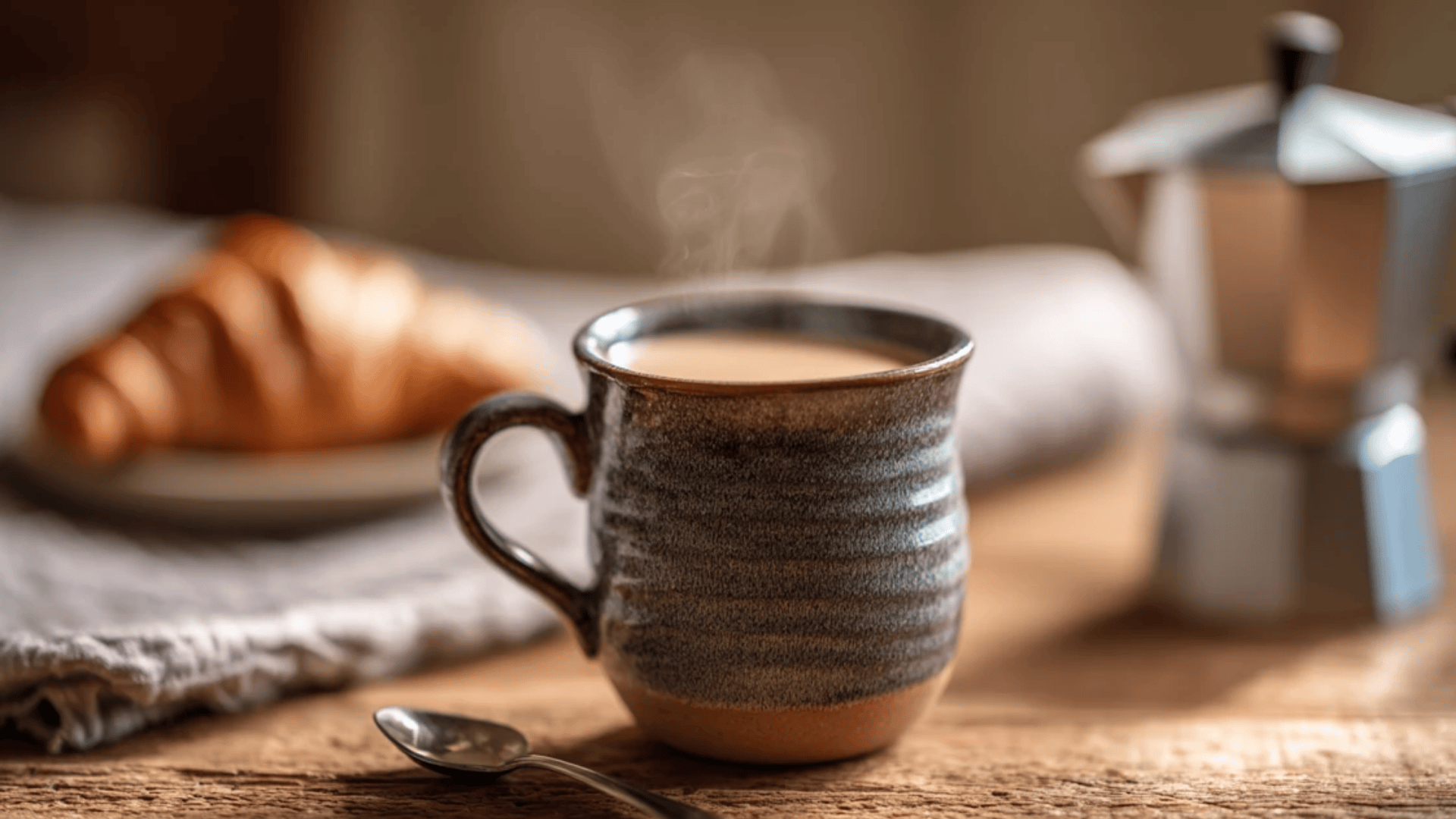
Blend equal parts hot French press coffee and steamed milk for a creamy, balanced drink. Add a hint of vanilla or honey for sweetness.
This French classic delivers comfort and simplicity, pairing beautifully with pastries or relaxed morning routines.
3. French Press Mocha

Mix 8 ounces of hot French press coffee with 2 tablespoons of cocoa powder and 2 ounces of steamed milk.
Stir until smooth, then top with whipped cream. Rich, chocolatey, and luxurious, this mocha satisfies both coffee cravings and dessert indulgence.
4. Coffee Tonic
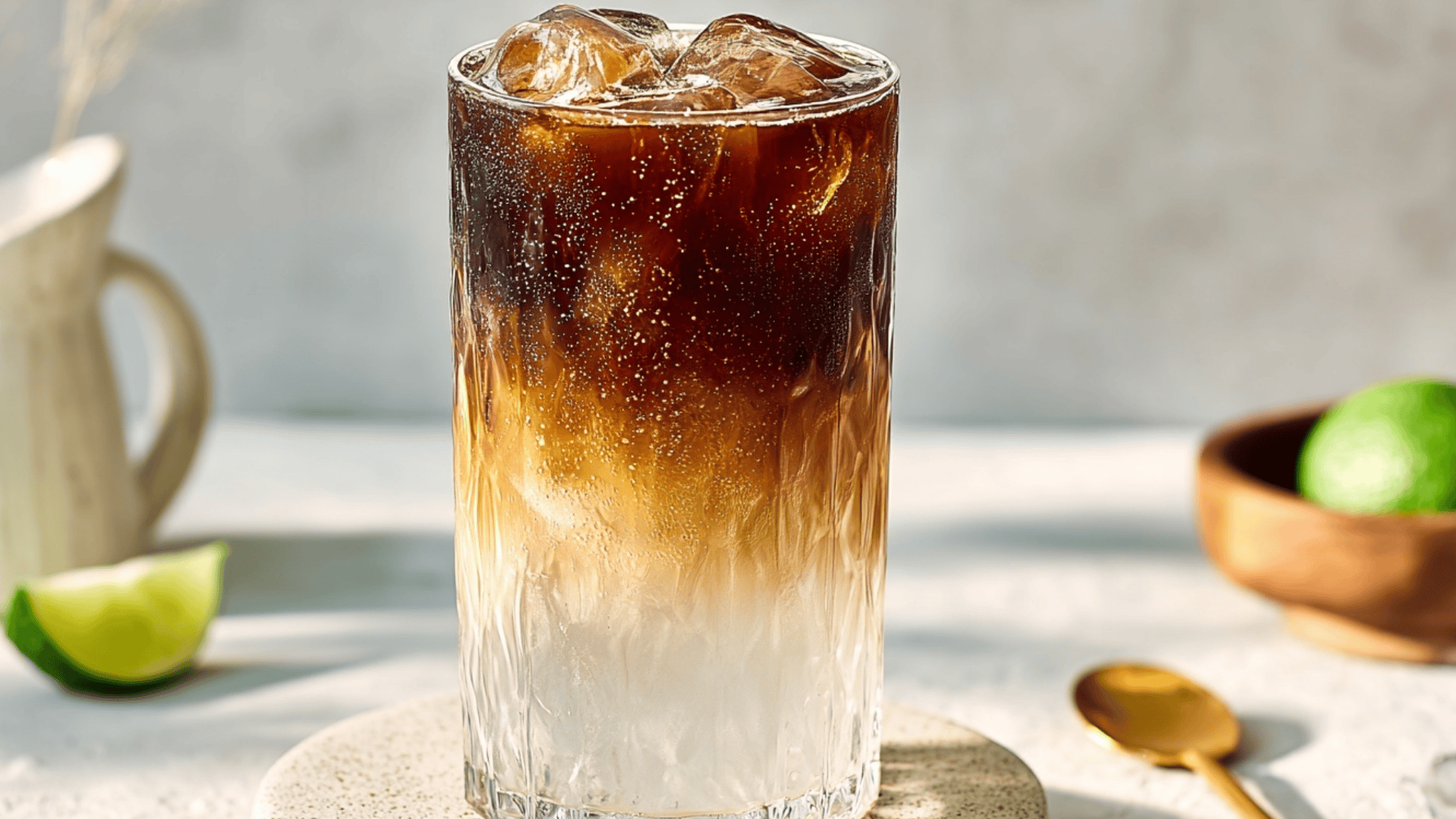
Fill a glass with ice, then combine four ounces of chilled French press coffee with four ounces of tonic water. Top with a slice of lemon or orange.
Lightly bubbly and slightly bitter, this refreshing twist highlights coffee’s floral, citrus notes beautifully.
What to Do with Used Coffee Grounds
Don’t toss those used coffee grounds, they’re surprisingly versatile! Rich in nitrogen, they make an excellent natural fertilizer for plants like roses and tomatoes, or can be added to compost.
Dried grounds also work as a deodorizer for fridges and shoes, a gentle exfoliating scrub when mixed with coconut oil, and even a natural insect repellent for mosquitoes and ants.
Their coarse texture doubles as an eco-friendly cleaning aid for greasy pans. Simple, sustainable, and effective, your French press grounds still have plenty of life left!
Always let used grounds dry completely before storing them. Damp grounds develop mold quickly, which defeats the purpose of reusing them.
Brew Boldly, Waste Nothing
The French press offers more than just great coffee; it provides an opportunity to slow down, control your brewing variables, and create something satisfying with minimal equipment.
From its international origins to its modern sustainability benefits, this brewing method checks every box.
Master the technique, experiment with recipes, and give those used grounds a second life. Your morning routine just got better.
Ready to try it yourself? Start with fresh beans, follow the recipe above, and share your favorite ways to reuse coffee grounds in the comments below.
Frequently Asked Questions
Why is French Press Coffee Stronger?
Immersion brewing extracts more oils and flavor compounds, while the metal filter preserves the richness that paper filters remove.
Is French Press Coffee Bad for Cholesterol?
It contains cafestol, which may raise LDL levels if consumed excessively; moderate, occasional use poses little risk.
Can I Use Pre-Ground Coffee?
Yes, but freshly ground beans yield a better flavor; choose coarse-ground coffee that is specifically labeled for French press brewing.
What’s the Best Coffee-to-Water Ratio?
Use 1:15, about two tablespoons of coffee per eight ounces of water, adjust for personal strength preference.








